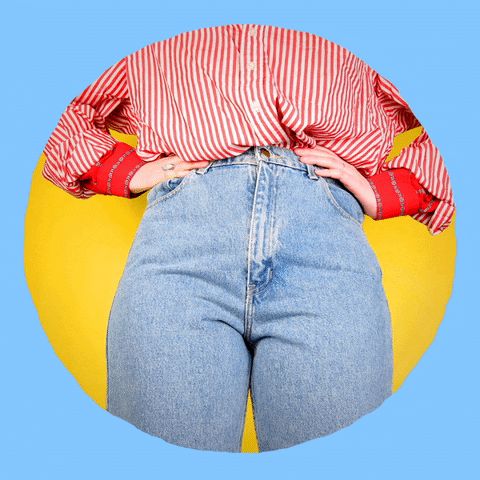
By Ori Lenkinski
*originally published on the Parental Choreography blog in Hebrew on Haaretz.co.il.
The other day, having succumb to the heat of summer, I went shopping for shorts. In one store, I picked up a pair that looked comfortable only to discover that they were branded as “Mom Shorts”. In fact, most of the jeans that I am drawn to are labeled this way. MOM. And while being a mother is one of the roles I am most proud of in my life, something about the term Mom Jeans makes me instinctively want to politely refold said jeans and walk out of the store.
Mom Jeans is a term that emerged in the late 1980’s and early 1990’s to describe a high-waisted, ankle-length cut of jeans often worn by “older” women. When the style came back into fashion in the 2010’s, it replaced the then-popular “boyfriend” jean with its less sexy and more practical implications.
The reason I like mom jeans is that they are comfortable and since becoming a mother I have a lot less patience for clothing that is not.
When I became a mother, I started to dress as I do to rehearsals.
As a dancer, comfortable clothing is essential. Dancers’ fashion is very specific. It is urban, unisex and oversize. It isn’t just about the shape of the clothes but the fabric they are made of, the way they sit on the body and the amount of movement they allow for. Because dancers view the body as a tool, the most important thing about clothes is that they do not get in the way of function.
Before I was a mother, outside of the studio, I didn’t mind if the jeans I wore were a little too tight or a little too long. I could wear a heel or try not to sit down for too long if the fabric of my pants didn’t give.
As a mother, these adjustments are not possible. I need to be ready for anything at any moment. I pick up, carry, bend down, lug and arrange constantly. I don’t wear white pants because there’s a high likelihood they will be covered in yogurt or something worse within an hour. I don’t wear heels because the possibility of spraining an ankle while chasing my little one in them is too great.
In both roles, dancer and mother, function trumps fashion. This rules out many styles of impractical clothing (many of which are foisted specifically at females). When we think of the actions the body must make rather than how the body looks, the packaging needed changes. I see this as a positive shift. The retail industry, however, is right there waiting to slap a big unfriendly label on you the moment you make it.
There is something deeply insidious in the branding of Mom Jeans. They hark at the impossible balancing act that women must do between the internal gaze and the external one. If a woman chooses to prioritize function and comfort, she must submit to being less “sexy”. And though the name Mom Jean may have been hatched as a tongue-in-cheek gest, the reality of this trade-off is dead serious.
Society wishes to tell us, as women, that our bodies may be useful so long as they are appropriately packaged to please the outside eye. If we decide to forego that second part, we are labeled uncool, old, dumpy. The Mom Jean is not a love letter to mothers rather a slight to the transformation that begins when a woman’s body begins to serve a purpose other than beauty.
In 2003, Tina Fey wrote a spoof commercial for SNL called “Mom Jeans” with the tagline “For this Mother’s Day, don’t give mom a bottle of perfume. Give her something that says, ‘I’m not a woman anymore, I’m a mom.’”
There are brands that have found other ways to differentiate their jeans styles without slighting mothers. Ata, for example, has named their various cuts after days of the week. When I put on their Saturday jeans, I don’t feel branded as a “non-woman”. Although I have been in the mothering business for over ten years and have passed the threshold that is forty, I would appreciate it if retail companies would refrain from defining my level of sexiness and leave me to contend with my complex feelings about aging alone.
